In a previous post, we reviewed data suggesting that much of the growth in the wind power industry has depended on government regulations such as state renewable portfolio standards (RPS) and financial incentives from tax credits. We also considered some of the benefits that the Obama Administration has cited as reasons to continue to invest in the industry and the infrastructure necessary to support it. In this post, we look at how wind farms can affect the places in which they are built and how some communities have responded. In a future post, we’ll review some of the resulting litigation.
Fossil fuels have more adverse effects than renewable energy sources by many measures, including air and water pollution, water use, public health, and greenhouse gas emissions. Nevertheless, renewable energy sources such as wind power also have adverse effects that must be considered. As we mentioned in an earlier post, wind power poses no significant issues with air, water, or soil pollution. According to a 2011 report by the Intergovernmental Panel on Climate Change (IPCC), the energy used and greenhouse gas emissions produced by wind turbines “are small compared to the energy generated and emissions avoided over the lifetime of wind power plants.” Unlike fracking, generating wind turbines use very little water, mostly during the construction phase. However, there are lingering concerns about noise, vibration, and visual effects, as well as adverse effects on wildlife. In contrast, while the economic effects vary, they are generally beneficial.
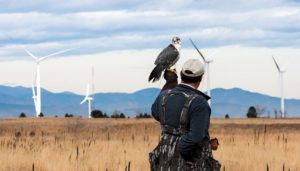
A trained falcon with tracking equipment gathers data that is helping scientists improve bird detection technologies at wind facilities. Photo from U.S. Department of Energy.
Wildlife Effects
As with any source of energy, wind power development can adversely affect wildlife and fragment, reduce, or degrade wildlife habitat. The primary concern with wind turbines is the threat that spinning turbine blades can pose to birds and bats, although there are other risks, such as changes in air pressure and collisions with transmission lines. Estimates of mortality rates due to wind power development versus other anthropogenic or natural causes vary widely, and more research is needed to better understand and mitigate risks. However, carefully siting wind power facilities, building tube rather than lattice towers to reduce perching sites, halting operations during low wind conditions when bats are most active, and avoiding unnecessary nighttime lighting are all methods to reduce mortality rates.
Noise, Vibration, and Visual Effects
Some people living near wind power facilities have complained about noise, vibration, and visual effects. The visual aesthetics of wind turbines are highly subjective; some viewers find them graceful while others see them as an eyesore. Occasionally, when the blades of a turbine pass in front of the sun, it can create a potentially irritating effect known as shadow flicker. This effect can be minimized with careful siting and by planting trees or installing window awnings. Although reports indicate that shadow flicker is not harmful, computer models can determine when specific buildings near turbines are likely to experience shadow flicker; using this information, building occupants could arrange to avoid exposure, or wind turbine operations could be halted at these times.
Most of the sound generated by wind turbines is aerodynamic noise caused by the blades moving through the air, although the turbines also generate some mechanical noise. The sound and vibration levels depend on turbine and blade design and maintenance as well as wind speed; newer structures are generally quieter. While excessive noise is a recognized cause of health problems, the peer-reviewed literature currently available doesn’t seem to show any evidence of wind farms causing significant harm to human health. However, most researchers admit that sensitivity to noise varies, and further study is needed to better understand potential effects.
A meta-analysis by McCunney and others published in 2014 did note that disrupted sleep was associated with increased noise from wind turbines across the reviewed studies; however, “the associations were weak and annoyance ratings were more strongly and consistently associated with self-reported sleep disruption.” The authors observed that the likelihood of someone reporting annoyance is strongly related to that individual’s attitudes toward wind turbines, the visibility of the turbines, and whether the individual obtains any financial benefit from the turbines. One study of 51 wind farms in Australia and Tasmania showed that 90% of complaints were registered after groups opposing wind farms included health concerns as part of their advocacy, lending further support to the hypothesis that there may be a nocebo effect (adverse health effects caused by negative expectations or other psychological factors).
Noise and vibration can be mitigated through careful site selection and using sound-absorbent insulating materials, while other factors contributing to annoyance can be minimized by holding open, informative discussions with area residents before developing plans for a wind farm. Financial incentives also seem to reduce complaints.
Economic Effects
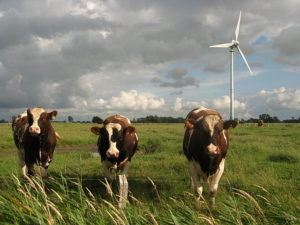
Livestock grazing near a wind turbine, courtesy of Dirk Ingo Franke, Wikimedia Commons, CC BY-SA 2.0.
Wind farms are generally economically beneficial to the communities in which they are built. Even if they have received tax exemptions or tax credits (which are usually for a limited time), developers will typically either pay some local taxes or negotiate payments in lieu of taxes (PILOTs). Workers who construct, operate, and maintain the turbines will also spend money in the local community. In addition, landowners who lease their land for construction of wind power infrastructure receive direct compensation; the specifics vary considerably, but often include some combination of a one-time fixed payment, annual payments, and/or a share of royalties based on the amount of electricity produced.
Sometimes the perception that the benefits of wind power accrue disproportionately while the adverse effects are more disperse can create a lot of tension in communities. One county in northern Oregon found an innovative way to deal with this, spreading the benefits of wind power among local residents to increase the positive impressions of those who don’t benefit from leases. From 2002 through 2010, taxes, fees, and assessments on more than 1,000 megawatts of wind turbine capacity brought $17.5 million revenue to Sherman County, which had fewer than 1,800 residents as of 2011. That revenue funded construction of public amenities such as a library, two new city halls, sewers, and a bridge. In addition, every Sherman County head of household who has owned property for more than a year receives an annual $590 dividend check.
As a final note, being in the real estate business, we have to ask how wind power projects affect real estate prices. As you might suspect, very little peer-reviewed literature has been published on the subject to date. A study by Lang and others published by Energy Economics in 2014 found “no statistically significant negative impacts on house prices, in either the post public announcement phase or post construction phase.” One of the most recent studies by Ben Hoen and others (Journal of Real Estate Finance and Economics, forthcoming July 2015) likewise suggests “no statistical evidence that home values near turbines were affected in the turbine post-construction or post-announcement/pre-construction periods.”[1] However, others have been critical of this study and other studies on the subject. The National Association of Realtors (NAR) has a good collection of links to information on both sides of the debate.
Have you experienced the effects of wind turbines? Feel free to share your story in the comments. And watch for our future post discussing some of the litigation that has resulted from conflicts over wind power projects.
[1] A previous study by Hoen and others prepared for the U.S. Department of Energy in 2013 is available at http://energy.gov/eere/wind/downloads/spatial-hedonic-analysis-effects-wind-energy-facilities-surrounding-property.

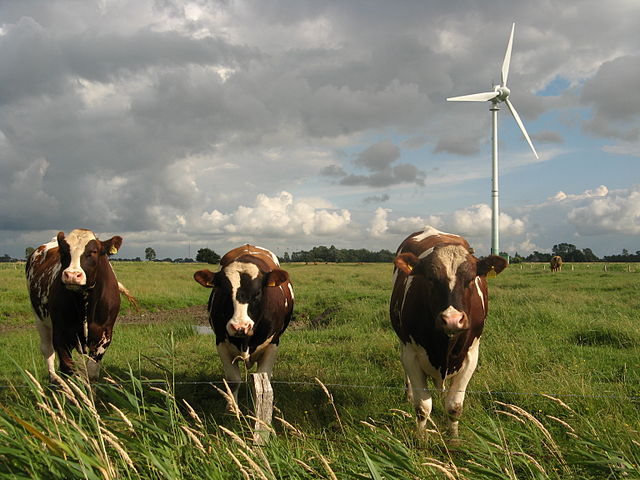
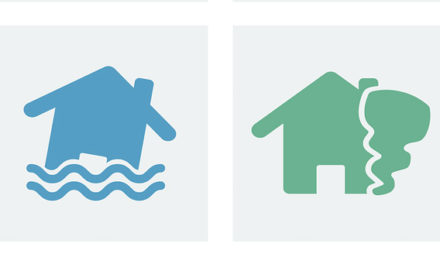

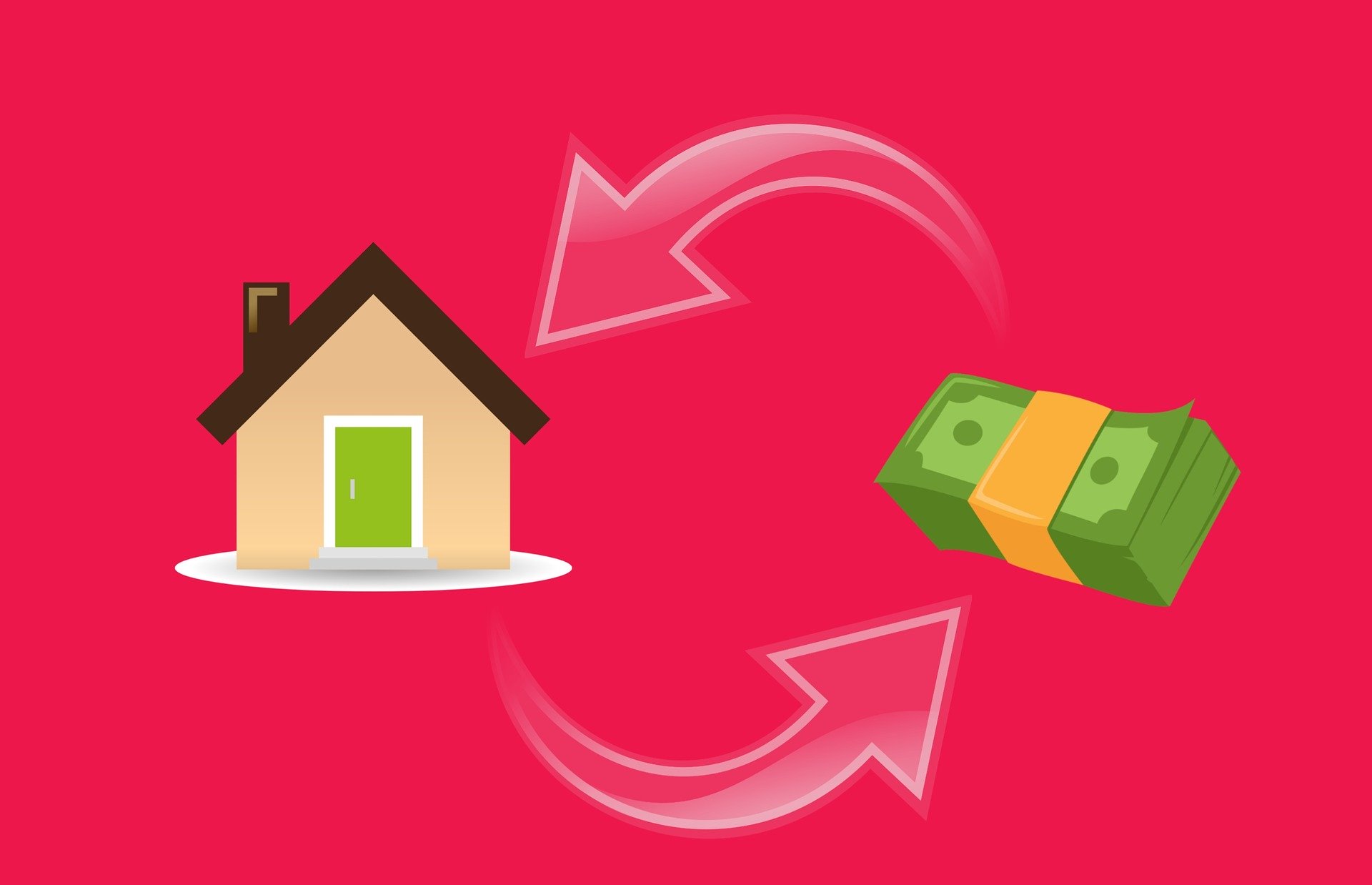
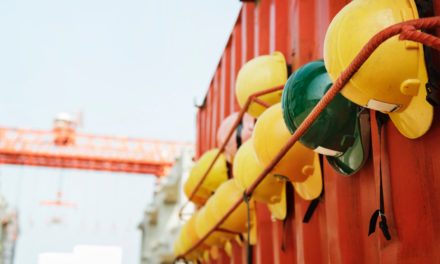
Recent Comments